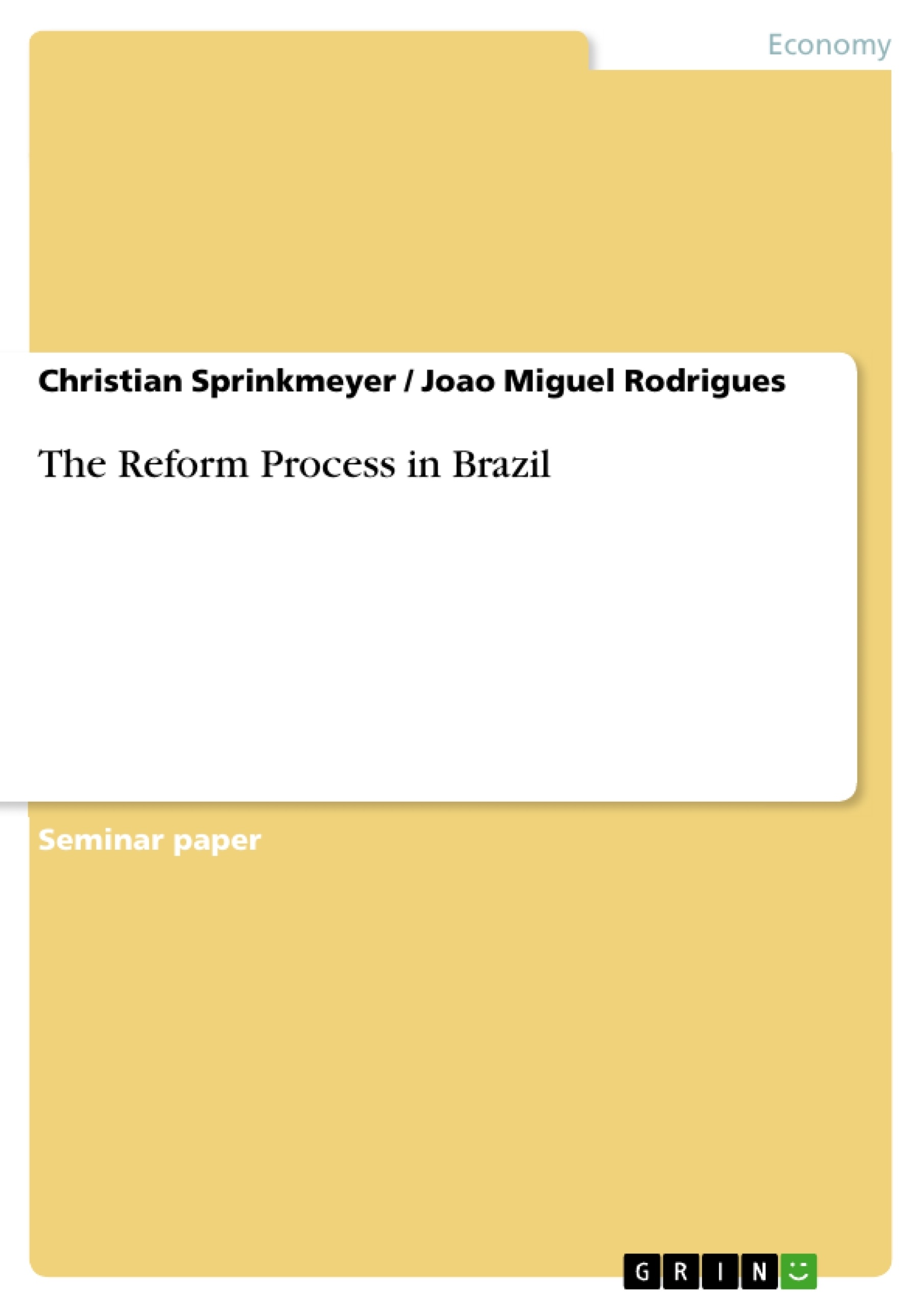This paper analyzes the path that Brazil?s economy has taken to reach today's status; the status of a stable economy that shows high potential to meet the challenging expectations that economists set on it. The idea is to source the roots of the economic stability and performance of Latin America?s largest country and to highlight the implications it will have in the near and remote future.
Chapter 2 focuses on the Real Plan launched in 1994. A set of reforms which transformed Brazil’s economy from a protected economy facing four-digit inflation rates into a stable economy capable of competing with developed economies. It discusses the implementation of the Real Plan, its measures and its positive and negative consequences for the Brazilian economy.
Furthermore we are going to deal with the recent past of Brazil’s economy since the presidential elections in 2002, when the leader of the workers’ party Lula da Silva was elected. We focus on the economic policy of the president and its government, whose election has almost led to the default of the Brazilian state because financial markets were afraid that the socialist candidate would pursue a 180 degree turn compared to the neoliberal economic policy of his predecessor. We analyze why Brazil was one of the last countries being affected by the financial crisis and why it
was one of the first to leave it behind.
Inhaltsverzeichnis (Table of Contents)
- Introduction
- The Real Plan – The origin of macroeconomic stability.
- Introduction of the Real Plan and its consequences.
- Brazil under Lula and the financial crisis
- Drivers of the economic growth: In-depth analysis of the economic sectors...
- The agricultural sector.
- The industrial sector.
- The service sector
- Trade and domestic demand......
- Implications for Brazil's economic future – Analysis of necessary conditions for growth.......
- Conclusion
Zielsetzung und Themenschwerpunkte (Objectives and Key Themes)
This paper aims to analyze the path of Brazil's economic development, highlighting the factors behind its current stability and the potential for future growth. It explores the origins of Brazil's macroeconomic stability and its implications for the country's economic future.
- The Real Plan and its impact on Brazil's economic stability.
- Economic policy under President Lula da Silva and its effects on the Brazilian economy.
- Analysis of the agricultural, industrial, and service sectors as drivers of economic growth.
- Evaluation of necessary conditions for Brazil's sustained economic growth.
- Implications of Brazil's economic development for its future.
Zusammenfassung der Kapitel (Chapter Summaries)
Chapter 2 examines the Real Plan, a set of reforms launched in 1994 that transformed Brazil's economy from a protected one with high inflation rates into a stable economy capable of competing globally. The chapter discusses the implementation of the Real Plan, its measures, and its positive and negative consequences for the Brazilian economy.
This chapter also delves into Brazil's economic performance since the 2002 presidential elections, where Lula da Silva, leader of the Workers' Party, was elected. The chapter focuses on the economic policies of President Lula's government and the impact of these policies on the Brazilian economy.
Chapter 3 delves into the factors driving Brazil's economic growth, providing an in-depth analysis of the agricultural, industrial, and service sectors. It explores the contributions of each sector to economic development and analyzes their potential for future growth.
Schlüsselwörter (Keywords)
The paper focuses on key topics such as macroeconomic stability, economic growth, the Real Plan, the Brazilian economy, the agricultural sector, the industrial sector, the service sector, trade, domestic demand, and necessary conditions for growth.
- Quote paper
- Christian Sprinkmeyer (Author), Joao Miguel Rodrigues (Author), 2009, The Reform Process in Brazil, Munich, GRIN Verlag, https://www.grin.com/document/186689



